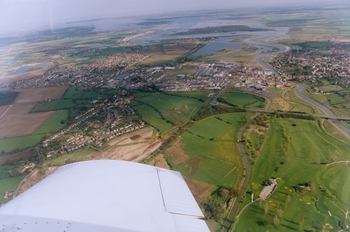Elms Farm Portfolio Project
Essex County Council, 2015. (updated 2016) https://doi.org/10.5284/1021668. How to cite using this DOI
Data copyright © Essex County Council unless otherwise stated
This work is licensed under the ADS Terms of Use and Access.
Primary contact
Essex County Council
County Hall
Market Road
Chelmsford
CM1 1QH
Resource identifiers
- ADS Collection: 1169
- DOI:https://doi.org/10.5284/1021668
- How to cite using this DOI
Introduction

The Late Iron Age, Roman and Early Saxon settlement at Elms Farm, Heybridge, Essex was excavated in the mid-1990s. The report for the site is split into two sections. Volume 1, published by East Anglian Archaeology, presents the synthetic discussion chapters regarding the site. Volume 2, which comprises the stratigraphic descriptions, finds and environmental reports, is published in parallel as a digital monograph in Internet Archaeology (https://doi.org/10.11141/ia.40.1), where it can be accessed free of charge.
The Elms Farm site was excavated in advance of the construction of a large housing estate by Bovis Homes Ltd. The total development area comprised c.29 hectares, of which some 18 hectares were subject to varying degrees of investigation by the Essex County Council Field Archaeology Unit (ECC FAU). The large-scale of the excavations is matched by the substantial and important artefact assemblage recovered, which included 6.4 tonnes of Late Iron Age and Roman pottery, 2910 Roman coins and over 9000 animal bones. Together this has enabled an appreciation of the development of the settlement over time and space, of the changing functions, status and economy of individual areas and the settlement as a whole, and the issues of transition, change and finally decline.
It is hoped that the archive will form the basis for future research and re-interpretation.






